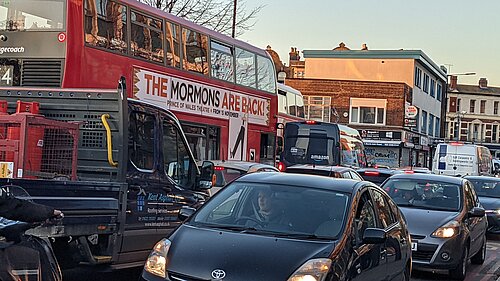The Times reveals LTN data from traffic counters is inaccurate
Traffic counters used to monitor the impact of low traffic neighbourhoods (LTNs) are not accurately recording vehicles during heavy congestion, The Times reveals.

In January 2020, on hearing of the proposal to introduce an LTN in Lee Green I sat in my front room monitoring the traffic on Longhurst Road. I knew there was a problem with rush-hour through traffic, but between 10 a.m. and 5 p.m. I saw elderly people cycling, children safely crossing the road and very few vehicles. Since the introduction of the LTN there is still very little traffic, apart from during the afternoon rush hour, which is at least as bad as before. In neighbouring Leahurst Road the traffic especially in the evening when vehicles from Lewisham are funnelled down Ennersdale Road and onto Leahurst, residents report that the traffic is now like that on an A road.
Lewisham Council's response to public question 2 on traffic monitoring in Leahurst Road (18th of January Council meeting) was to calculate the number of vehicles over a 7-day period, congratulating itself on the fact that overall traffic has apparently reduced in the LTN. Yet almost all the Council's statistics are based on averages, and this masks the very serious peaks of polluting traffic at certain times of day in all those roads that have been sacrificed to the LTN: all the boundary roads and some internal roads like Leahurst and Manor Park.
The subject of LTNs and traffic displaced onto boundary roads featured recently in a Guardian article on Ella’s law, the clean air bill which Ella's mother Rosamund Adoo-Kissi-Debrah CBE is campaigning for and which Lib Dems wholeheartedly support:
The article notes that Rosamund feels the LTN has had a negative effect on the area where she lives, near the South Circular. Yet it then states that 'academic studies show otherwise', linking to another Guardian article claiming that LTNs appear not to push traffic onto boundary roads.
The thrust of the article is that LTNs have been a success. Yet buried in the article is the statement 'Of those [boundary roads] monitored, 47% showed a fall in motor traffic and 53% showed an increase. When measured as a median, the overall figure for boundary roads rose by 1.3%, but fell by 1.6% when calculated as a mean (average).'
This quotation makes my point. If you use means/averages, you get a different, ‘better’ result than if you calculate medians. This is particularly apparent when one looks at bus delays, which have quite clearly been impacted by the LTN. Of course, buses run to time most of the day, but that's not when people need them to get to or from work/school!
Within the Lee Green LTN, it is possible that car use has on average dropped somewhat, especially as more people took up walking during the pandemic. And residents on some formerly busier roads have benefited from barriers restricting traffic. But if the overall success of the LTN is judged by the numbers of gridlocked, highly polluting cars using boundary roads and a few through roads during the rush hours, it has been a disaster. As it has been disastrous for those people living on peripheral roads whose asthma has deteriorated in the last couple of years.
There is a solution, one put forward by the Lib Dems over 2 years ago. To alleviate the pressure on boundary roads during rush hours the Council could use the already existing ANPR cameras to allow residents through the LTN zone. Everyone who needs to use their car because they are disabled, elderly, have heavy equipment to carry, etc. knows that they are adding to the pollution by being forced to make massive detours on heavily congested main roads at peak times. Let's stop massaging the figures and acknowledge that averages do not represent the lived experience of residents in but especially around the Lee Green LTN.
Karen Pratt,
Lee Green Lib Dems